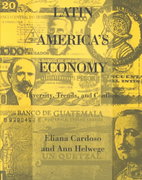I need help with number 5 please
6 Safari File Edit View History Bookmarks Window Help '53? I0) -- Wed 8:51 AM Q 0 EE . O . Li ' R '9; Enewclassesmyuiedu C 0 ] lill Suppose there are only two goods (cotton and oranges) and only two countries (Australia and New Zealand). Assume the following information on technology in each country (labor hours required per unit of output) and resource endowments (total labor hours per period available for producing the two goods): Australia New Zealand 1 ton cotton 1 ton oranges Total Labor Hours Available per period Which country has an absolute advantage in producing cotton? ...in producing oranges? What is the opportunity cost of producing one more ton of cotton in New Zealand? In Australia? What is the opportunity cost of producing one more ton of oranges in New Zealand? In Australia? Which country has a comparative advantage in producing cotton? ...in producing oranges? Briey, how do you know? So far, we've only considered production (supply) in each country. Now let's consider consumption, which is based on demand. Let QDA and QDNz represent the number of millions of tons of oranges people in Australia and a@mg\"aiaasanmroo@mxw Safari File Edit View History Bookmarks Window Help 1 7 ) 0 Wed 8:51 AM Q DE . . . R h newclasses.nyu.edu C Berlin Google Docs Google Drive Comparative a... To illustrate the... At the same ti... www.econ.yale .... How to unblur ... https:/ewclas... Homework Hel . .. How to take a s... + So far, we've only considered production (supply) in each country. Now let's consider consumption, which is spors t One based on demand. Let Q A and Q NZ represent the number of millions of tons of oranges people in Australia and New Zealand, respectively, would want to buy at each relative price for oranges. Also, let Po be the price per ton of oranges, and Pc be the price per ton of cotton. Finally, suppose that the demand curve for oranges in each country is as given in the table below: a.) pdf co Demand Equations for Oranges: In Australia In New Zealand abus.2 Q'A = 5.5 - 0.5(Po/ Pc) Q NZ = 12 + 3(Po/ Pc) for all Po/ Pc R h newclasses.nyu.edu C Berlin Google Docs Google Drive Comparative a... To illustrate the... At the same ti... www.econ.yale.... How to unblur... https:/ewclas... Homework Hel ... How to take a s... + spors relative price of oranges would make them relatively more expensive, and thus decrease demand for them. (This is t One the substitution effect of the change in relative prices.) On the other hand, the rise in relative price would also increase total real income (purchasing power) in New Zealand and thus increase demand. (This is the income effect of the change in relative prices.) In this example, because we are assuming that the income effect dominates, a rise in the relative price of oranges increases the quantity of oranges demanded. We didn't have to assume that, but we did. a.) So that's why in this example, the slope of the demand curve is positive for all Po/ Pc 2 1. pdf In Australia, however, the demand curve for oranges must have a negative slope. That's because for all Po/ Pc









